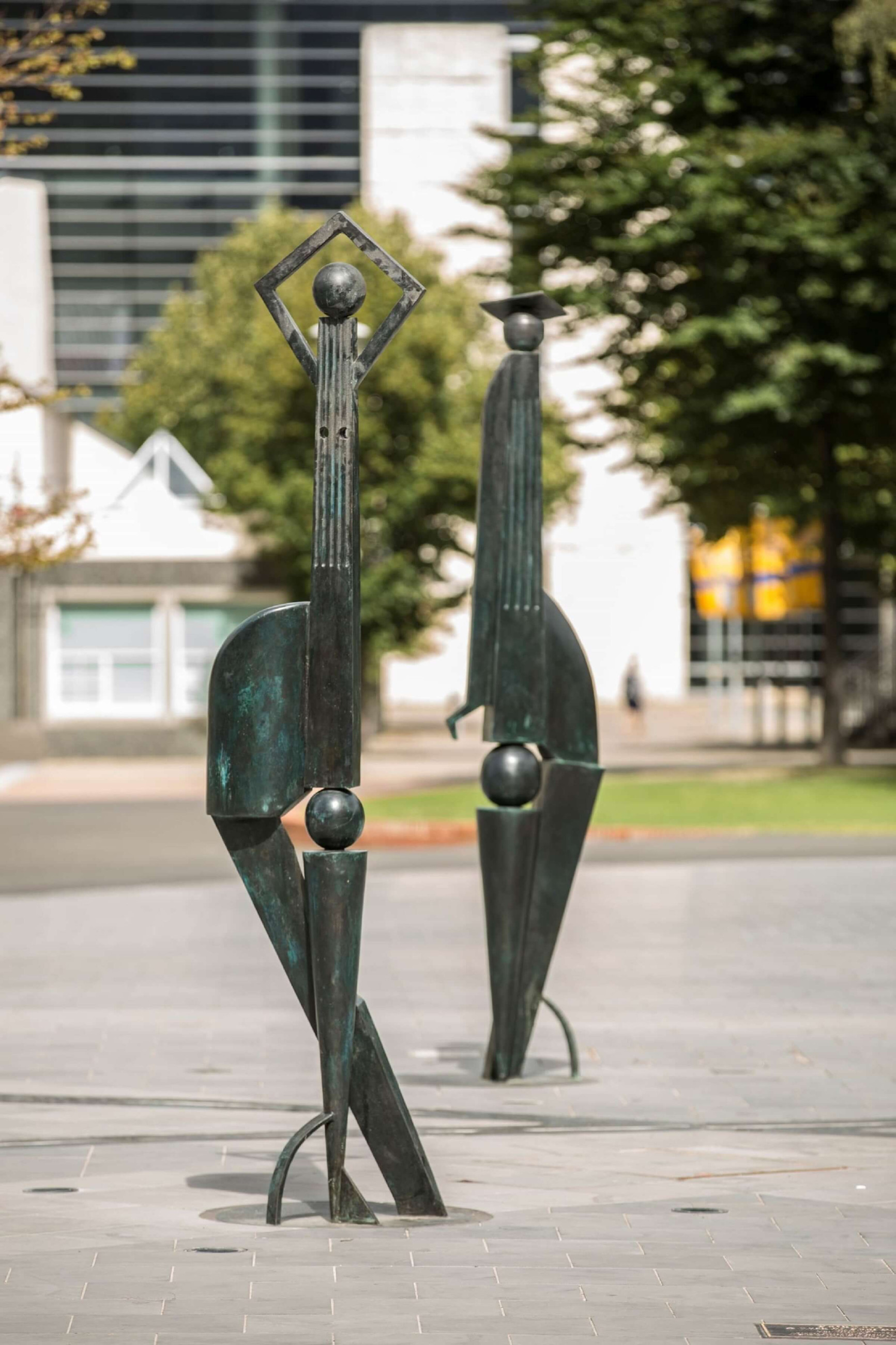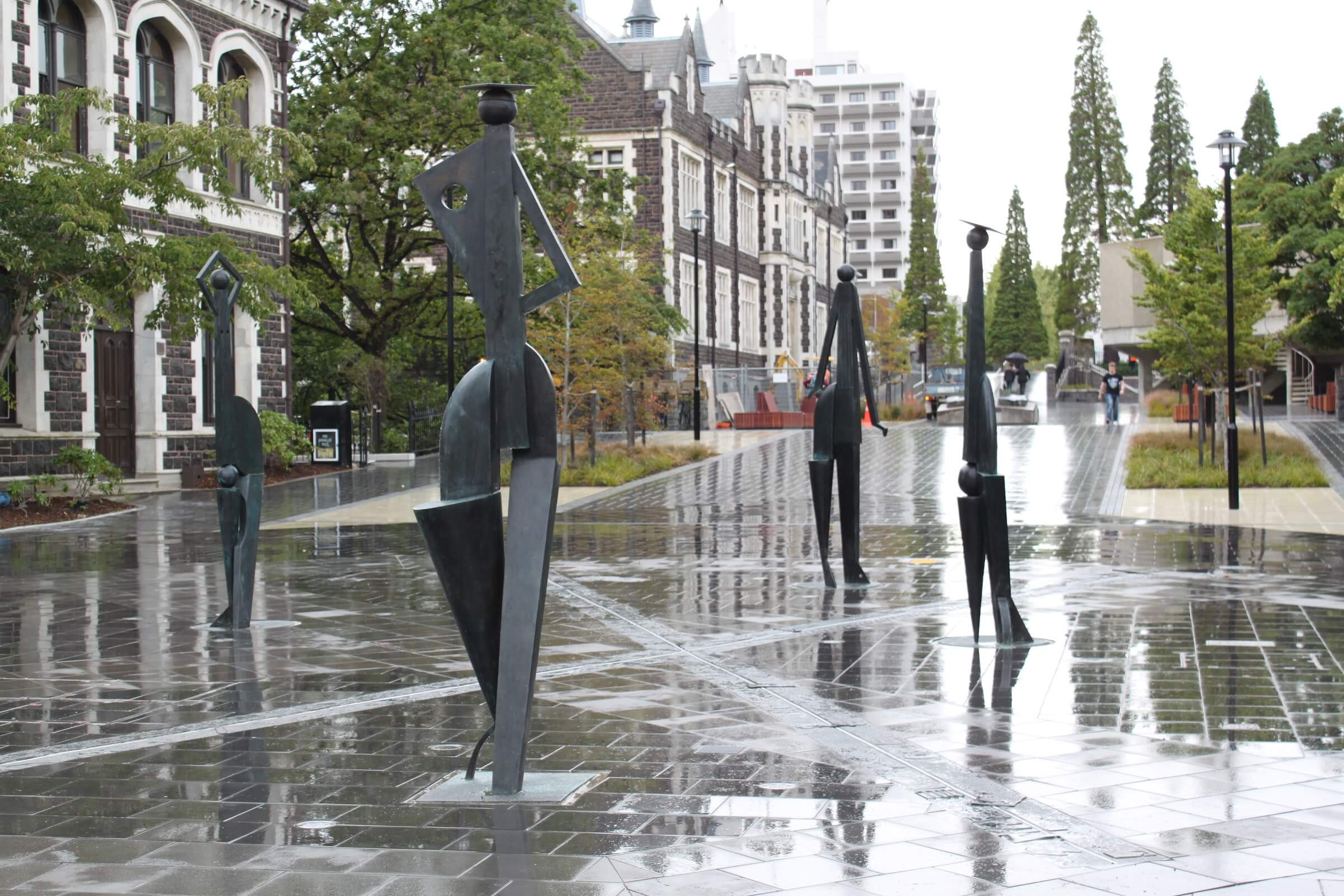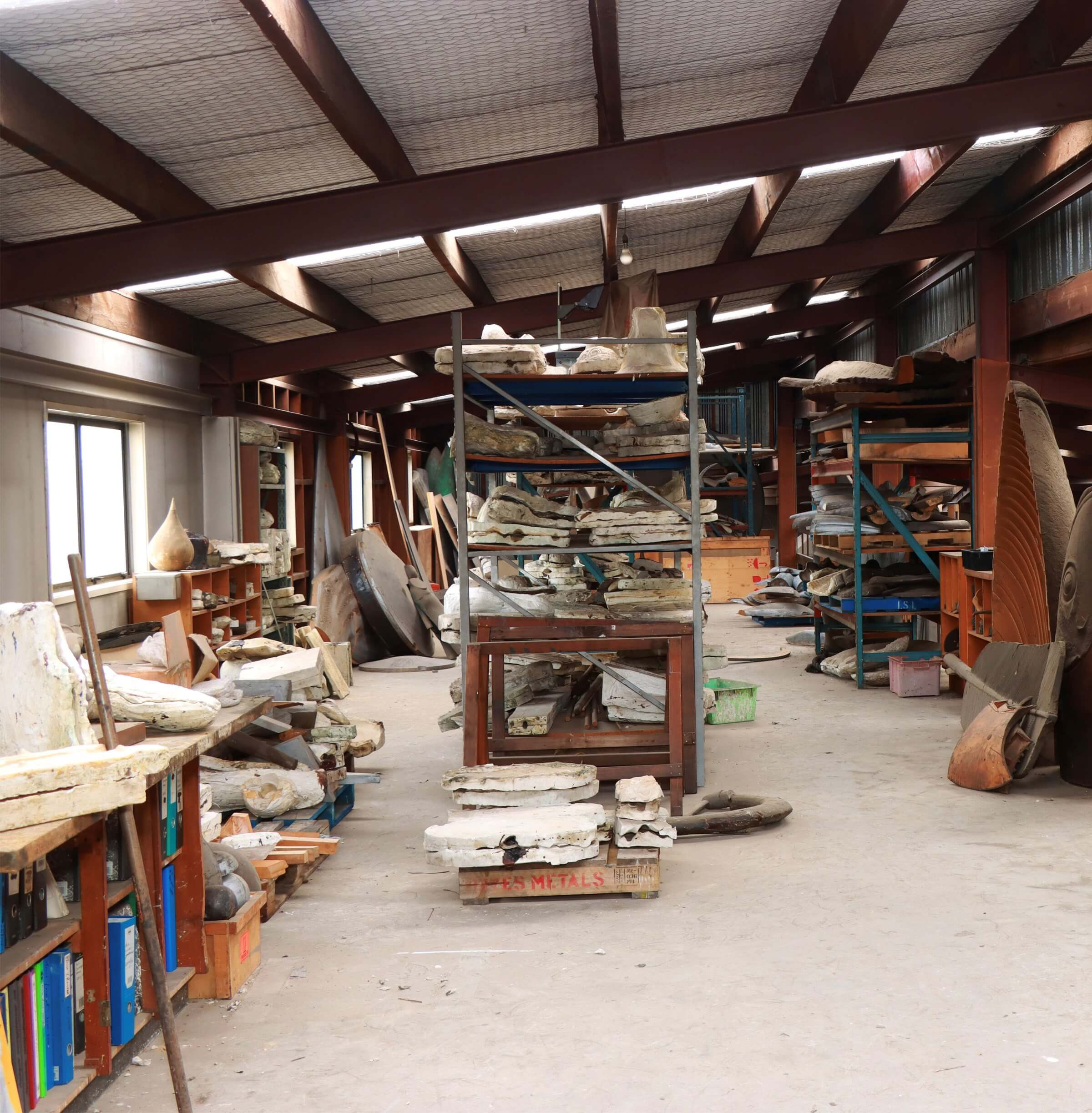Visit Sculptures In Otago
Visit Sculptures In OtagoIcon, 2006
Location: Queenstown Gardens, Park Street, Queenstown
Many of Dibble’s sculptures are simple tributes to New Zealand, a regional focus being something he prized. Some works are direct enactments of traditional emblems.
The large fern, Icon, was originally ordered from a small work that was scaled up massively – the model being only around 250 mm high, and the large version being some 2.6 metres - so more than a ten-fold scaling. The first of these large versions went to Salisbury, England for a New Zealand family wanting a reminder of home. This work was undertaken as an edition of two, so there was scope to cast another, the form being one with which the sculptor was particularly pleased.
The fern in the sculpture is spun upside down from how it is normally seen in its famous logo form, resting not on the thicker stem but on the leaf tips as it might hang in nature. The edition in the Queenstown Gardens is on one of the walkways leading into the park, easily accessed by visitors.
Note: While Icon was created in 2006, the plaque beside the sculpture states it was commissioned by Aspiring Arts and Culture Trust in 2009, perhaps reflecting the donor and date of installation.

Pathways, 2016
Location: intersection of Castle and Union Walks, University of Otago, Dunedin
In 2016 the Stuart Residence Halls Council, a group strongly associated with the University of Otago in Dunedin, commissioned for their 75th anniversary a large work to fit within the University campus. The work was installed at the intersection of Castle and Union Walks, a site where hundreds of pedestrians travel daily, students traversing as they shift from one class to another.
For this commission Dibble created enlarged and abstracted bronze re-enactments of people sharing the crossroad, distributed in a random configuration that walkers might assume, with the same variations in posture and gesture.
Their placement forces those passing by to interact with them, becoming part of the artworks themselves; the figures no longer simple statuary, but an installation that inclusively welcomes people in.
Uniting the figures over the area is a large relief bronze cross with a lighting strip mounted into the ground; marking the intersection with a giant X, and evoking the St. Andrew’s Cross of Scotland. The surface of the cross is embellished with modelling to customise the work to its location, with various icons and motifs of Otago and the University. But it is the figures towering across the campus grounds that give the artwork presence, assemblages of mathematical forms but allegories of human-ness.


